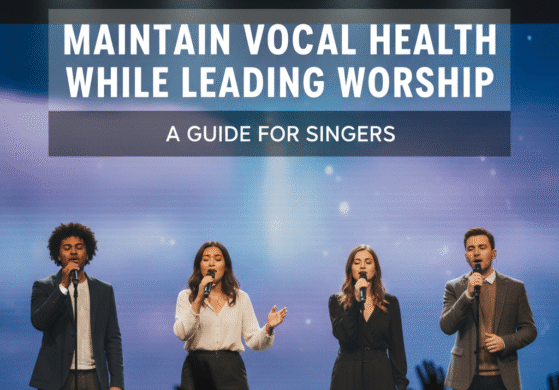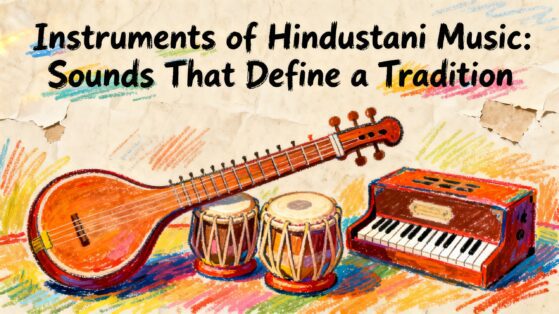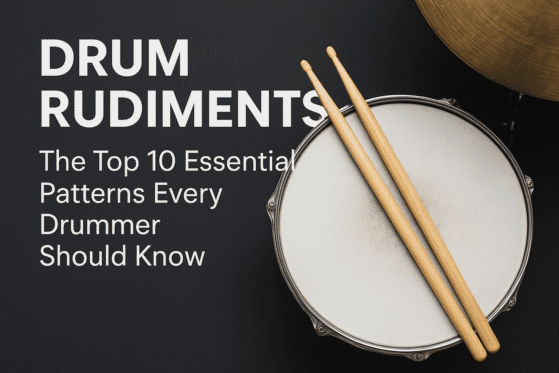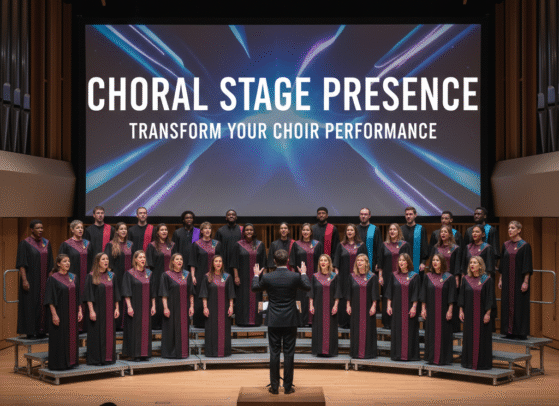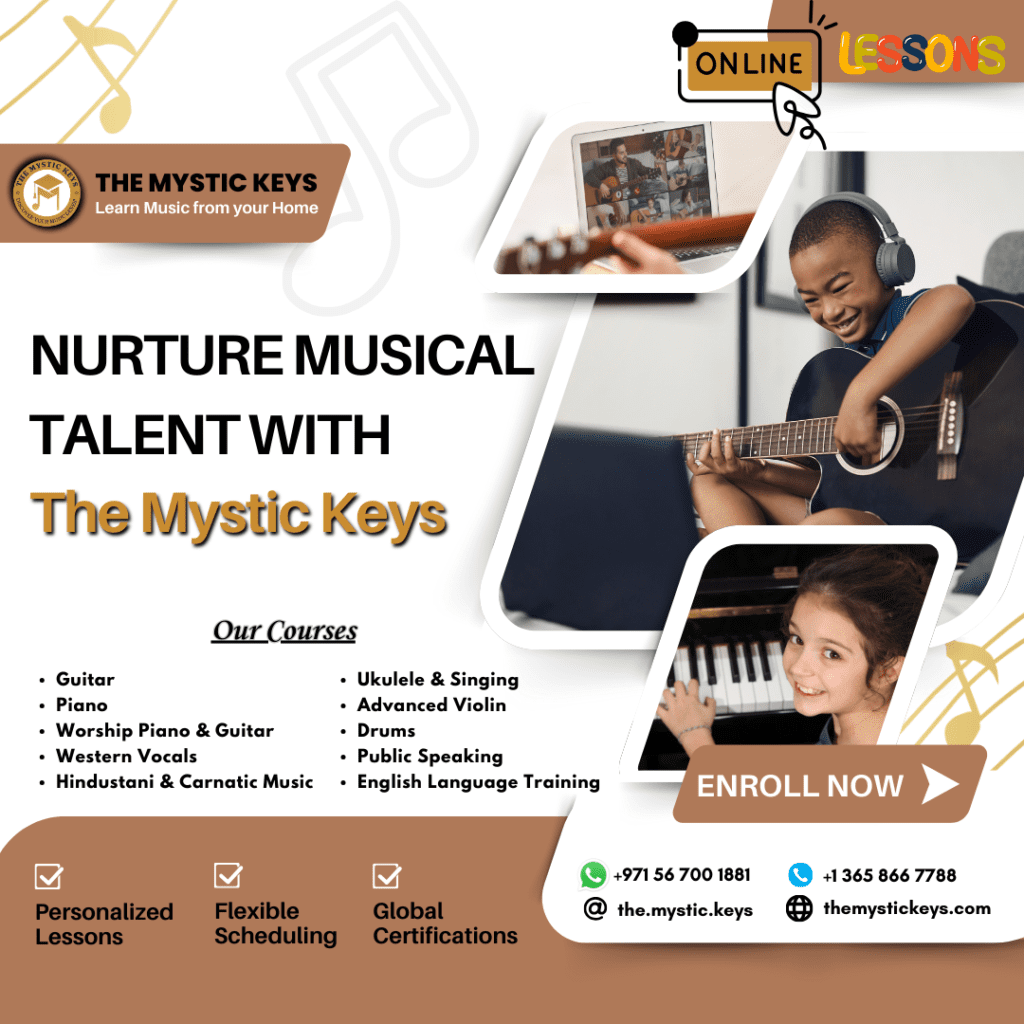Top 10 Instruments to Learn Online in 2025
Why 2025 Is the Best Time to Learn an Instrument Online
In today’s digital world, distance, time zones, and busy schedules are no longer barriers to learning music. Thanks to modern technology, anyone can now begin or expand their musical journey from home. Whether you’re a beginner, a hobbyist, or someone returning to music after a break, this is the perfect time to start. That’s why we’ve created this comprehensive guide on the Top 10 Instruments You Can Learn Online in 2025 — to help you find the perfect instrument that matches your goals and lifestyle.
In this blog, you’ll discover why each instrument works especially well for online learning, the key benefits, what to look for in virtual lessons, and the type of learner it best suits.
By the end, you’ll have a clear idea of which instrument fits your interests and how to make the most of online learning as you begin your musical journey in 2025.
Learn Piano & Keyboard – The Best Way to Learn an Instrument Online in 2025
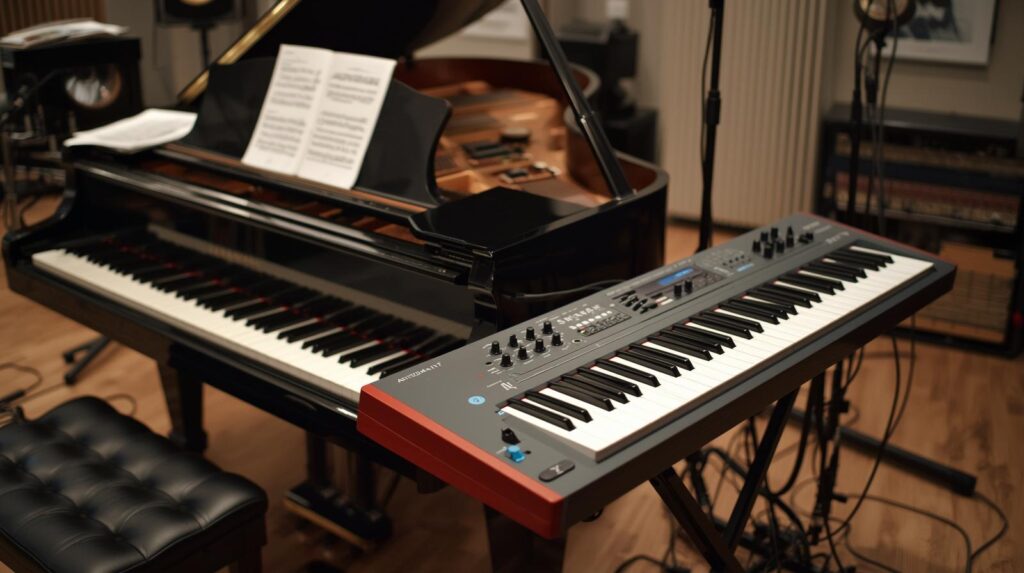
Why it’s a top choice:
According to multiple sources, the piano (or keyboard) is one of the most beginner-friendly instruments because you can see the layout of notes, start playing simple melodies early and build music theory foundations simultaneously.
It translates extremely well to online teaching: student can show the keyboard position via camera, teacher can share sheet-music on screen, apps can assist with real-time practice.
Learning the keyboard gives you a strong foundation in chords, melody, harmony—skills that transfer to many other instruments.
What to look for in online lessons:
A keyboard with at least basic functionality (61 or 76 keys) and a sustain pedal if possible.
A teacher who uses screen-sharing of sheet-music or notation and gives you homework/practice-exercises.
Good micro-phone/audio setup so the teacher can hear your rhythm, hand coordination.
Good fit for:
Learners aiming for versatility (song-playing, composing, accompaniment).
Students who want visual structure and clear progress early.
Anyone comfortable sitting at a stable desk/space for lessons.
2. Guitar (Acoustic and Classical)

Why it’s a strong online-learning option:
The guitar is extremely popular, and there is a wealth of online tutorial content, structured courses and interactive apps
For many learners, you can start playing songs early (using basic chords), which provides motivation.
A relatively modest equipment requirement: acoustic or classical guitar, camera, and stable internet connection.
What to look for in online lessons:
Clear camera angles showing both hands (fretboard and strumming).
Structured progression: open chords → strumming patterns → song application.
A teacher who monitors your technique to avoid bad habits (which are hard to correct later).
Interactivity: live sessions + feedback, not just pre-recorded videos.
Good fit for:
Learners who want to play pop/folk songs, accompany singing, or join jam sessions.
People who prefer portability (you can pick up a guitar and play anywhere).
Students willing to build finger strength and coordinate both hands.
3. Ukulele

Why this stands out in 2025:
The ukulele has fewer strings, is smaller and cheaper than a guitar—making it less intimidating. Sources list it as one of the easiest instruments to start.
Great for remote lessons: small size, easy to manage space wise, good audio pickup.
Because many chords are simplified, you can start playing real songs quickly—promoting early wins and motivation.
What to look for in online lessons:
Instructor who covers tuning, basic strumming, chord transitions and song application early.
Bonus: lessons that incorporate singing or accompaniment to make the learning more fun.
Good audio feedback: because the ukulele is soft, mic/audio quality matters.
Good fit for:
Beginners of any age (children, adults) seeking a quick-start instrument.
Learners who want portability and flexibility (travel, small spaces).
Those with less time to invest or wanting fun-focused learning rather than deep classical technique.
4. Voice / Singing

Why voice is a top online instrument (yes, voice is an instrument!):
The human voice is the most accessible instrument—we already carry it. According to beginner instrument guides it ranks high because cost is minimal and basic songs can be learned early.
For online instruction: lessons can focus on microphone technique, pitch practice, breathing, posture—very suitable for remote format.
Learning singing often complements instrument learning (and vice-versa), giving more holistic musical development.
What to look for in online lessons:
A teacher who uses audio feedback (recordings of your voice) and gives exercises on pitch, breathing, tone.
Good microphone/headset to capture your voice clearly (room acoustics matter).
Structured progression: warm‐ups → song repertoire → performance/recording.
Community or peer exposure (online choir, group sessions) to motivate.
Good fit for:
People who love to sing and want to improve technically (not just casually).
Learners comfortable practicing regularly and recording/reviewing themselves.
Those wanting to integrate instrument + voice in their musical journey.
5. Violin
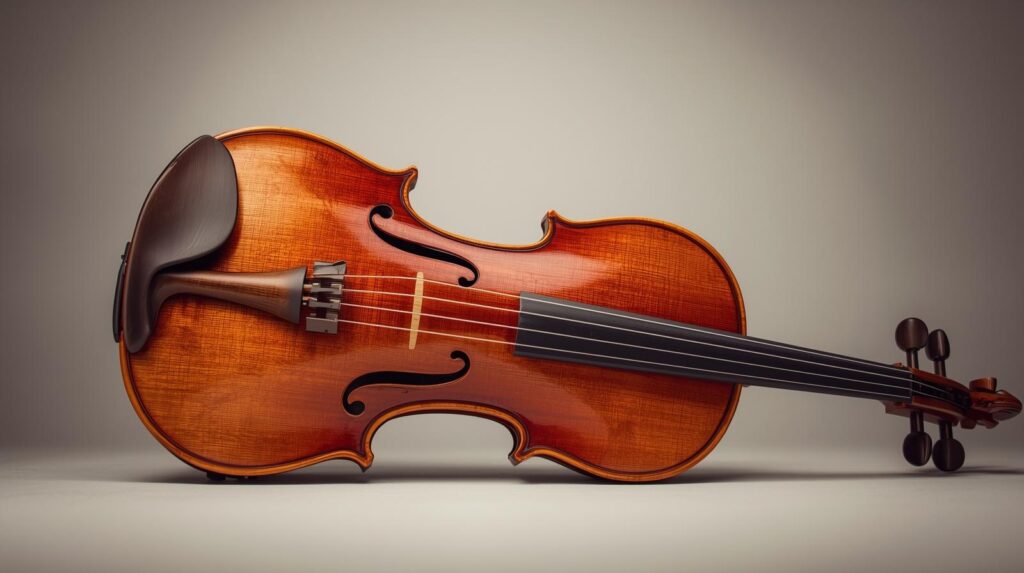
Why violin makes the list:
Though somewhat more challenging than some instruments above, the violin is listed as a great beginner-friendly choice when well instructed because it fosters ear-training, technique and ensemble playing.
Online lessons are increasingly effective thanks to good camera setups (showing bowing, finger placement).
If you’re drawn to classical, folk or orchestral styles, the violin opens many doors.
What to look for in online lessons:
Instructor who emphasises correct posture, bowing technique early (to avoid physical strain).
Good quality audio to ensure tone quality and intonation are heard properly.
Regular feedback loops (video submissions) because technique is more delicate online.
Possibly a violin and bow rental/adjustment service (for beginners) advised by teacher.
Good fit for:
Learners motivated for more serious study and willing to invest in time/gear.
Students with interest in classical or ensemble playing.
Anyone comfortable with fine motor technique and dedicated practice.
6. Flute

Why flute is worth considering online:
The flute is a woodwind instrument that often features in beginner-friendly lists: it has simpler fingering (compared to many reeds) and is adaptable to online lessons.
In online instruction you can focus on embouchure (mouth shape), tone, and basic melodies without needing large-scale gear or band logistics.
What to look for in online lessons:
Lessons that emphasise correct posture, breath control, tone production (which are easy to monitor via video).
Good microphone/audio so teacher can hear subtle tone issues.
Beginner modules including simple melodies, scales, and progression to band/ensemble later.
Good fit for:
Learners interested in classical, band or orchestral music.
Those willing to develop breath control, tone and articulation.
Students looking for a wind instrument that’s moderately portable and manageable in a home setup.
7. Keyboard (Electronic) / Digital Piano Variation

Why emphasise digital keyboard?
They are affordable, often come with built-in learning features, headphones for silent practice (perfect for homes/apartments).
Many online music academies use digital keyboards as default for remote lessons.
Digital keyboard plus online lesson + recording software = you can log progress, share with teacher easily.
What to look for in online lessons:
A teacher experienced with digital keyboards (including using built-in features like metronome, drum accompaniment, recording).
Lessons that integrate both technique + creativity (compose, play, record).
Good internet connection and camera angle to view left hand (chords) and right hand (melody).
Good fit for:
Beginners wanting to learn from home in small space.
Learners who may want to transition to full piano later but start digital.
Students who like blend of performance + technology.
8. Drums / Percussion

Why drums/percussion are increasingly popular online:
Rhythm instruments like drums are essential in music and good for developing timing, coordination, groove. Beginner-friendly resources list percussion as accessible.
Online lessons work well especially with electronic drum pads or small-kit setups—so space and noise hurdles are reduced.
What to look for in online lessons:
Instructor who uses video to show posture, stick technique, foot coordination (if using kit) or pad technique.
Lessons that include rhythm drills, metronome work, groove practice and musical context (songs).
Student setup: preferably an electronic kit or pad with headphones to reduce noise.
Good fit for:
Learners who love rhythm, groove and want to play in bands or jam.
People who are comfortable with coordination, multi-limb movement.
Students with a dedicated practice area (even small) and who want an dynamic instrument.
9. Harmonica

Why the harmonica is a clever online-instrument pick:
It’s small, inexpensive, portable and has low gear overhead; listed in beginner-friendly instrument guides.
Great for online lessons: teacher can easily monitor your embouchure, breath, phrasing via video; you can practice almost anywhere.
What to look for in online lessons:
Focus on breathing technique, simple melodies, blues/jam style to keep engagement high.
Teacher gives challenges to play along with backing tracks (which you can use at home).
Good video/audio so teacher can monitor clarity and tone.
Good fit for:
Learners on a budget or with limited space/time but strong motivation.
Those who like folk/blues/jam styles rather than formal classical training.
Students who travel often, since harmonica is super portable.
10. Ukulele Extension
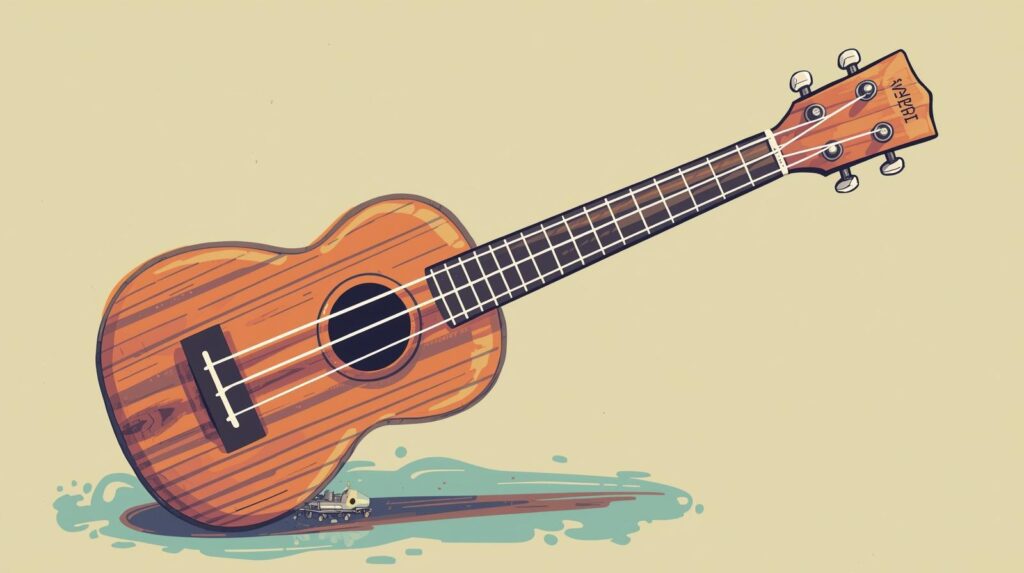
Why recorder (or similar) makes the cut:
The recorder is often cited as one of the easiest instruments to start with: cheap, light, intuitive fingering and gives early success. Craft Music+1
For online learning, it means minimal logistics; teacher can monitor finger placement, tone, posture via camera.
It builds great foundation in music reading, embroidery of breathing/embouchure if you later move to flute/saxophone.
What to look for in online lessons:
Lessons that teach correct posture, fingerings, simple songs immediately (to motivate).
Regular short practice check-ins and feedback from teacher.
Supplemental material: sheet-music, backing tracks, video reviews.
Good fit for:
Younger learners or beginners who are trying out instrument learning.
People who want to try something with low commitment but good learning potential.
Students who may later transition to larger woodwinds.
Bonus | Factors to Consider When Choosing the Right Instrument to Learn Online in 2025
Your personal interest: The instrument you want to play is far more important than what’s “easy”. Motivation drives practice
Space & budget: Some instruments (full drum kits, large string instruments) require more space and investment. Online lessons reduce travel cost, but you still need a good setup.
Online lesson compatibility: Make sure your instrument allows clear audio/video, and your teacher uses tech-friendly methods (screen-sharing, video submission, etc).
Time and practice commitment: Even beginner-friendly instruments need regular practice. If you only have 10 minutes/week, pick something that gives quick rewards.
Long-term goals: If you want to join bands, compose, accompany singing, etc, pick an instrument that aligns.
Teacher & curriculum: Since we are at The Mystic Keys, we emphasise teachers who are trained in remote pedagogy, provide interactive sessions, monitor progress, and adapt to you.
Why Choose The Mystic Keys to Learn Your Instrument Online in 2025
Our instructors are experienced not just in their instrument but in online pedagogy—camera angles, feedback loops, home-practice setup.
We offer structured curricula for each of the instruments listed above, tailored for remote learners—from beginner to intermediate.
Flexible timings across time zones, with recorded sessions, practice check-ins and progress tracking.
Small group or one-to-one options, so you get teacher attention and we monitor your technique (not just video watching).
we integrate modern tools — from recording your practice sessions and sharing detailed feedback to using interactive music apps — making your journey to learn an instrument online in 2025 dynamic, engaging, and highly effective.
Conclusion | The Best Way to Learn an Instrument Online in 2025
2025 offers more opportunities than ever to learn a musical instrument online—from the comfort of your home, on your schedule, supported by tech and expert voices. Whether you choose piano, guitar, ukulele, voice, violin, flute, drums, harmonica or recorder, what matters most is consistency, great teaching and a curriculum built for your goals.
At The Mystic Keys, we believe in guiding you every step of the way. If you’re ready to begin (or restart) your musical journey, pick an instrument from our list, sign up for a trial class, and let us help you unlock your musical potential.
Intersted in learning music with us? Register now
For more information and exciting resources about learning music, visit our website at The Mystic Keys. For more music content and exciting offers follow us on
Facebook, Instagram, YouTube, LinkedIn, Twitter, Pinterest, and Threads.



